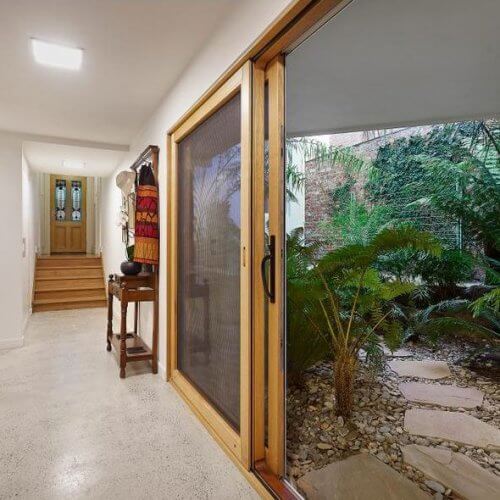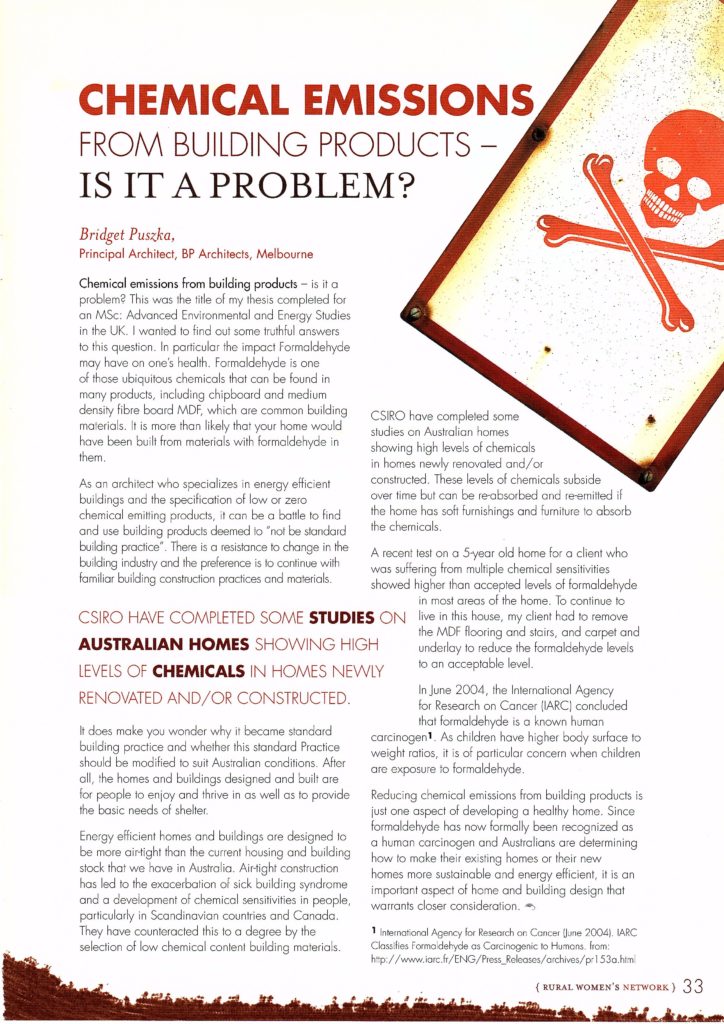The Monumental Truth about Sick Building Syndrome
By Bridget Puszka, BP Architects
Is Your home making you sick?
And what is sick building syndrome?
How can you make your house a healthy home? These questions and more answered in this article.

what are sick buildings?
Sick Building Syndrome is where the building occupants experience health issues associated with a building. Although it is difficult to diagnose, it is a recognized medical condition.
The symptoms increase with the time people spend in the building. Once away from the building, the symptoms improve and may even go away. The cause may be the poor indoor air quality in the building.
what are the symptoms of sick house syndrome?
The symptoms of sick house syndrome or sick building syndrome are like allergies. A central fact is that there is an increase in the incidence of symptoms the longer you spend in the building.
There are a variety of symptoms. You could have a respiratory issue. Such as throat irritation and breathing difficulties. Also, you could feel a tightness in your chest or have a runny nose. Or you could start sneezing and have a burning sensation in your trunk. You could develop dry, itchy skin rashes. Headaches that you associate with time spent in the building can be a symptom of sick building syndrome. You could feel dizzy. It could affect your gastrointestinal tract, and you could feel nauseous.
These general symptoms are typical of sick building syndrome. No specific illness identifies with sick building syndrome.
what causes sick Building syndrome?
There are many causes associated with sick building syndrome. It could be due to poor ventilation or having a high level of dust in your home. You could have mould or fungus in your home, and this, in turn, is in your indoor air. If you have the common chemical formaldehyde in your indoor air, this will make you have a physical reaction. Formaldehyde can come from building materials used to build your home. Or from your wooden furniture. Asbestos in your home can cause asbestosis and mesothelioma. If you have high levels of carbon monoxide, you will develop flu-like symptoms. Carbon monoxide can cause death.
Many factors can cause sick building syndrome. Exposure to these factors can cause you to have an allergic reaction. These are the known factors that will create a response. Dust mites and their droppings are a known cause of allergic reactions in humans. Having high levels of carbon dioxide and carbon monoxide will cause reactions. Lighting conditions such as high-intensity lights and dark lightings can cause you to react. Extremes of temperature, such as high indoor temperatures, will create a physical response.
Certain chemicals are known to cause reactions. As will mould, bacteria, pollens and some viruses. Vehicle pollution will cause a reaction. All of these factors can cause sick building syndrome.
how do you prevent sick building syndrome?
The good news is that if you fix the sick building, and you fix the illness. So if you build your home using building materials that do not emit chemicals. Or only emit low levels of chemicals or volatile organic compounds.
Addressing all the indoor air quality issues will go a long way to improving your health. If you fix any damp issues you have in your home to remove the possibility of mould. The temperature of your house will stop mould and bacteria from reproducing.
Similarly, reducing the amount of dust in your home will reduce the number of dust mites you have exposure to. And have a low maintenance home which will also reduce the number of dust mites in your home.
Adequate ventilation in your home will improve your indoor air quality. You can use toxin absorbing plants such as mother-in-law tongue or Sansevieria. They scrub the air and improve your indoor air quality.
If you want your home to be a healthy home contact Bridget at BP Architects, find out how we can help you. Learn more about how we work with our Clients to help them get their beautiful architect design house.
An article in the Rural Women’s Network ‘Chemical Emissions from Building Products – Is it a Problem? By Bridget Puszka, BP Architects discusses high levels of Chemicals in newly renovated and constructed homes.



